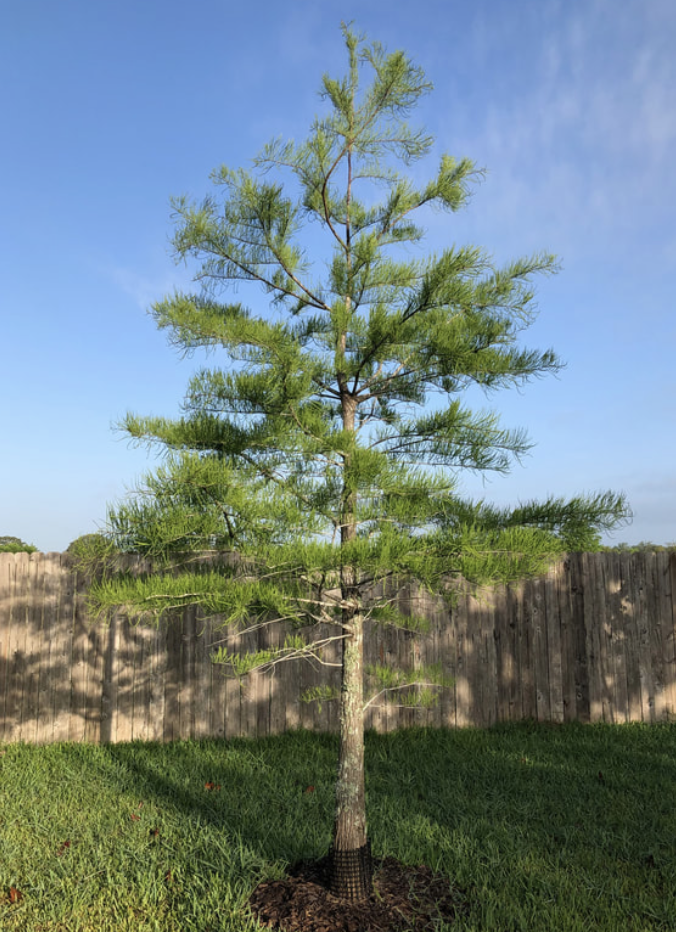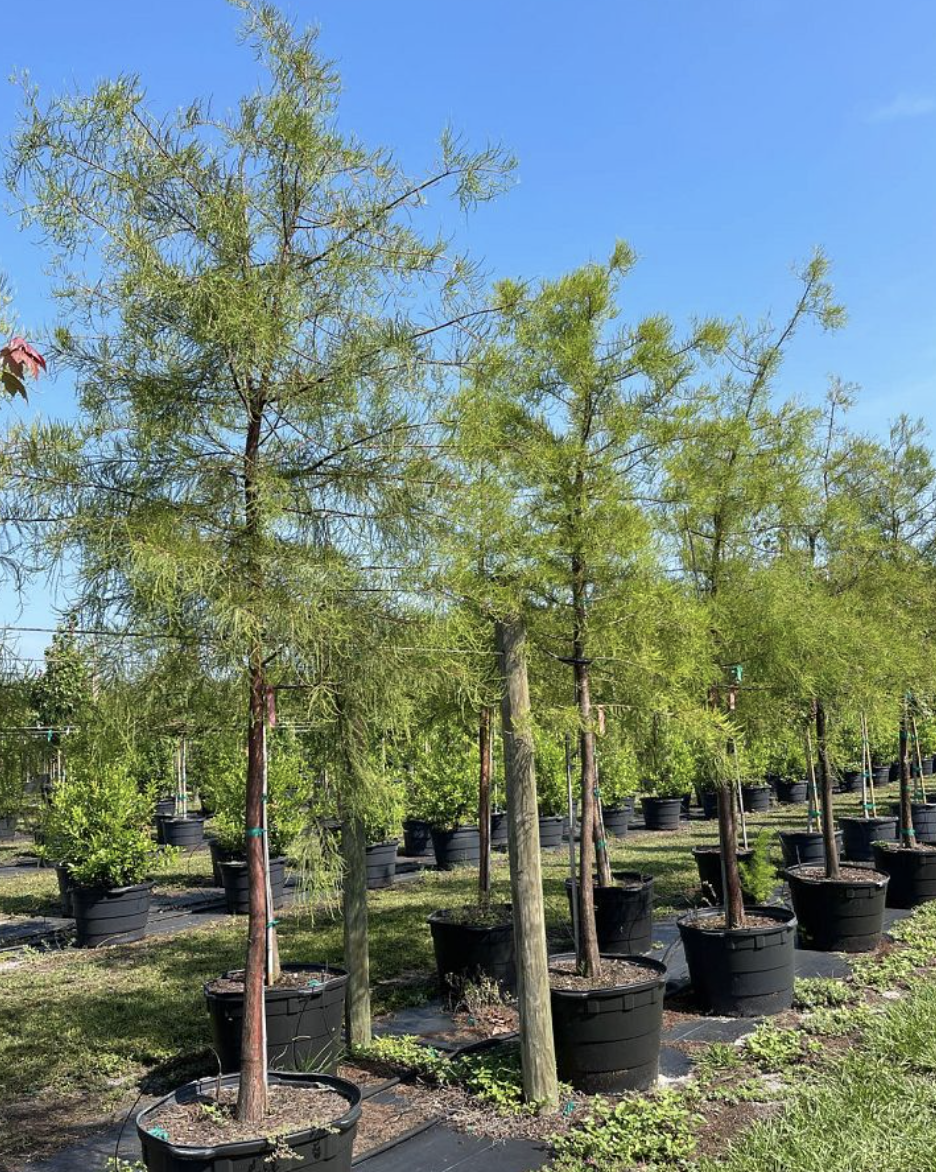Pond Cypress
TAXODIUM ASCENDENS: PONDCYPRESS
Description
Similar to baldcypress in that the trunk is perfectly straight 50 to 60 feet tall, pond cypress has a narrower crown, is smaller, and has a more open habit. It is found along the edges of streams and around the edge of swampy ground where water is standing; whereas baldcypress is usually found along stream banks. The bright green, awl-shaped leaves are arranged in an upright row formation along the branches when young, giving a somewhat stiffer and more upright appearance than baldcypress. The leaves turn an attractive light brown in fall before dropping but the bare branches and light brown, ridged bark provide much landscape interest during the winter. The trunk grows unusually thick toward the base, even on young trees. This is thought to provide support for the tree in its wet habitat. The small seeds are used by some birds and squirrels.
Height: 50 to 60 feet
Spread: 10 to 15 feet
Crown uniformity: symmetrical
Crown shape: pyramidal, upright/erect, columnar
Crown density: open
Growth rate: fast
Texture: fine


Culture
Light requirement: full sun to partial shade Soil tolerances: clay; sand; loam; slightly alkaline; acidic; wet to well-drained Drought tolerance: high Aerosol salt tolerance: moderate
Use and Management
Although often seen at water's edge where it will develop "knees", or root projections, that will extend above the water for gas exchange, pondcypress can also be grown in dry locations and could make an attractive street tree for a very narrow space. Cypress knees do not generally form on these drier sites. The "knees" do not form as readily as on bald cypress, even on wet sites. It provides a good vertical accent to the landscape and should be used more often in urban areas. The roots do not appear to lift sidewalks and curbs as readily as some other species. Its delicate foliage affords light, dappled shade, and the heartwood is quite strong and resistant to rot. However, most lumber available at lumber yards today is sapwood and is not resistant to rot. Pondcypress is ideal for wet locations, such as its native habitat of stream banks and mucky soils, but the trees will also grow quite well on almost any soil, including clay, silt, and sand, except alkaline soils with a pH above 7.5. Its drought-avoidance mechanism allows it to drop leaves in extended dry periods but little harm appears to come to the tree. Pondcypress is relatively maintenance-free, requiring pruning only to remove dead wood and unwanted lower branches which persist on the tree. It maintains a desirably straight trunk without pruning and does not form double or multiple leaders as do many large trees. The cultivar 'Prairie Sentinel' is narrower than the species. Propagation is by seed.
Diseases
No diseases are serious. Twig blight is caused by a weak pathogen and is usually present on dead or dying tissue. When the tree is stressed the fungus can kill branch tips. Dead tips can be pruned off. Do not let dead or diseased branches remain on the tree. Keep trees healthy with regular fertilization.
Florida’s Premiere Tree Installer, The Tree Planters located in Lakeland, is your #1 source for large, rare, and exotic palms and trees. At The Tree Planters, we have installed and transplanted thousands of large trees of every variety all over Florida for over 50 years. Every tree we sell, we plant. Every tree we plant, we guarantee for One Full Year.
Delivery is included in the price of your tree. We proudly serve the entire state of Florida. (All other delivery fees will be quoted at time of purchase), and a One-Year Guarantee on every tree planted by The Tree Planters.